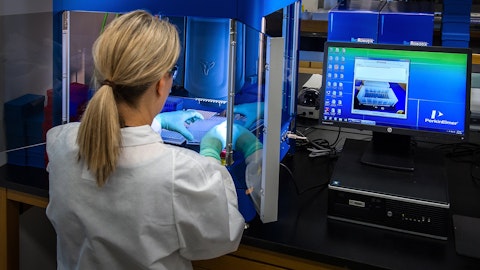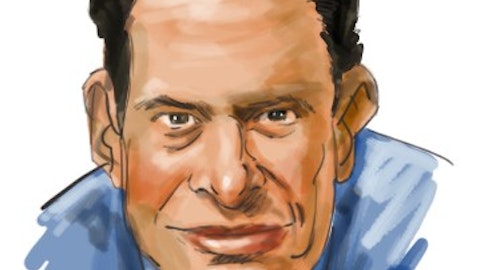Operator: Our next question comes from Justin Kim with Oppenheimer & Co. Please go ahead.
Justin Kim: Hi. Good morning. Thanks for taking our question. Maybe just a quick one first and then a commercial, I just think about the additional data being approved for PNH, can you just discuss how those results may inform again and whether you think the clinical bar might be lower in terms of the alternative pathway inhibition required, perhaps due to the nature of these or competitive bar there? And then maybe on the commercial front for Charlie, could you just update us on the mix of growths you’re observing, whether those patients being added are naïve to prophylaxis or experience as well a coming from high prescribers versus slow volume prescribers. Thanks.
Helen Thackray: Sure. So on the PNH question, what we need to understand next is the dose that gets us to efficacy. So we’re looking for a safe dose that is effective and that’s measured by both the effect on the conference pathway and then the clinical outcomes. We’re looking at that in PNH because that is an excellent opportunity to understand fairly quickly with a small number of patients, whether we’re getting to rigorous complement inhibition and the clinical outcomes that translate and we know what we need to see to demonstrate a dose that is achieving both. We would expect that dose then to translate to other diseases and we’re treating the PNH opportunity as one that we would assign, we would sort of achieve and understand the pivotal dose and then take that into IGN and other diseases.
And we’re — as a reminder, we’re looking for a differentiated drug to take forward. We’re looking for safety and efficacy that’s as good or better from what we’re seeing in the field of complement inhibition and we’re looking at that with one daily dosing.
Jon Stonehouse: And that’s what others have done in the field with alternative pathway inhibitors. So this is a new ground. And then on the patient and prescriber mix, Justin again the story is consistent patterns. So still about 50% of the patients are coming from other prophylaxis products and the other 50% at least best we can tell we’re not recently on a prophylaxis product or we’re completely naive. So it’s great to see that consistency. And then on the prescriber mix, we get a little more than half of our prescriptions from those top 500 doctors that I’ve talked about, the ones who treat about 50% of the market and then we get a little less than half from the larger group of other physicians. And what’s great is that every quarter we’re seeing a very consistent number of new ORLADEYO of prescribers being added. So we continue to go broader prescriber market and then deeper within existing prescribers.
Operator: [Operator instructions] Our next question comes from Serge Belanger with Needham & Co. Please go ahead.
Serge Belanger: Hey, good morning. A lot of questions have been asked at this point. So maybe a couple around the HAEA Summit that was told recently, let me just talk about the level of awareness of ORLADEYO within the patients that you met there and whether you’ve seen — you’ve experienced any tailwind from attending the meeting, maybe from additional enrolment in the quick start program.
Charlie Gayer: Yeah, Serge as Jon said earlier, we did — first of all, we had a big presence there and this was our first time attending since we’ve launched ORLADEYO and so we had a booth there. We had two booths, both a branded and an unbranded booth. A lot of patient traffic coming through our booths, a lot of great conversations and it’s always a little frustrating, but what a patient says, oh, it’s this drug launched, but we did hear that. And so it’s great now they know ORLADEYO is on the market and as we said, 1,200 patients and family members, they all left knowing that ORLADEYO is on the market. So what we’re telling our healthcare providers out there is that this this conference just happened and they may be getting patients coming in and asking different questions about their therapy and that ORLADEYO is — they may have questions about ORLADEYO.
So we’ll see if we get a tailwind, but it was definitely an important milestone and it was just — it was great to see the community again and just to see their excitement of just them getting together and it was a really great meeting.
Jon Stonehouse: I think it’s like the first of what I hope will be a bunch of patient meetings regionally. All that stuff stopped. It was COVID and so a certain state a certain part of the country, they gather and I think the other thing is people reconnected. It’s like watching a family reunion honestly and the word of mouth spread because we got an equal number of people that came up to and it’s like oh my God, ORLADEYO has changed my life and let me explain you why. And so when they’re talking to other patients about that, I think that’s going to be helpful too. And then the last piece was, the KOLs are there as well and it’s just a different dynamic at a patient meeting and when you go to the college meeting or quad AI. And so and we’re able to show up in a way that differentiates us maybe from our competition and I think it’s a chance to really reinforce and connect with the KOLs in a way that maybe it’s harder and in other settings. So it was fantastic.




